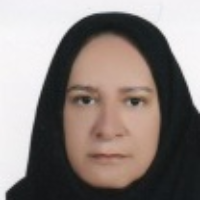Derivative Spectrophotometric Method for Determination of Losartan in Pharmaceutical Formulations
Author(s):
Abstract:
Losartan, a highly effective blood pressure lowering agent, has been widely used for the treatment of hypertension. A fast and reliable method for the determination of losartan was highly desirable to support formulation screening and quality control. A first derivative UV spectroscopic method was developed for determination of losartan in the tablet dosage form. The first derivative spectrum recorded between 220 and 320 nm, and a zero-crossing technique for first derivative measurement at 232.5 nm was selected. It is found that the selectivity and sensitivity of method to be in desirable range. In comparison with the direct UV method, the first derivative UV spectroscopy has a definite through without any interference from UV absorbing excipients. This method is also fast and economical in comparison to the more time-consuming HPLC method regularly used for formulation screening and quality control and can be used routinely by any laboratory possessing a spectrophotometer with a derivative accessory. The linear concentration ranges were 2-50 ?g/mL, (Dl = -0.0159C - 0.0056, r =0.9994, n=6). Between days CV% 2.9, within day CV% 2.1, analytical recovery close to 98.1 % shows the suitability of the method for determination in quality control.
Language:
English
Published:
Iranian Journal of Pharmacology and Therapeutics, Volume:3 Issue: 1, 2004
Pages:
21 to 25
https://magiran.com/p440082
سامانه نویسندگان
مقالات دیگری از این نویسنده (گان)
-
Effect of green copper nanoparticles synthesized with Aloe vera aqueous extract on germination parameters of pinto beans under salinity stress
Fatemeh Naghavi, Sayed Mohammad Reza Khoshroo *, , Mehrnaz Mahmoudi Zarandi
Journal of Plant Research, -
Synthesis and characterization of three-dimensional mesoporous cerium oxide hollow sphere and its application as efficient electrochemical sensor for determination terazosin
Najmeh Farvardin, Shohreh Jahani, , MohammadMehdi Foroughi *
Journal of Nanoanalysis, Spring 2022


